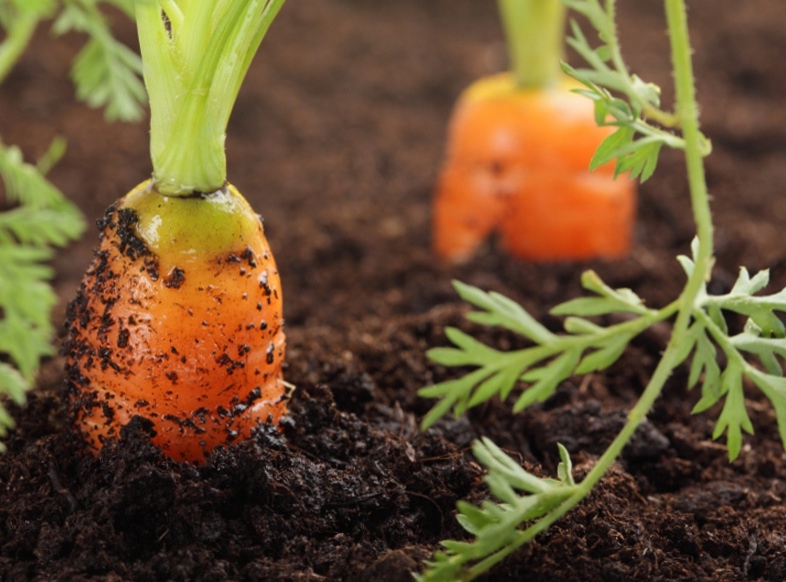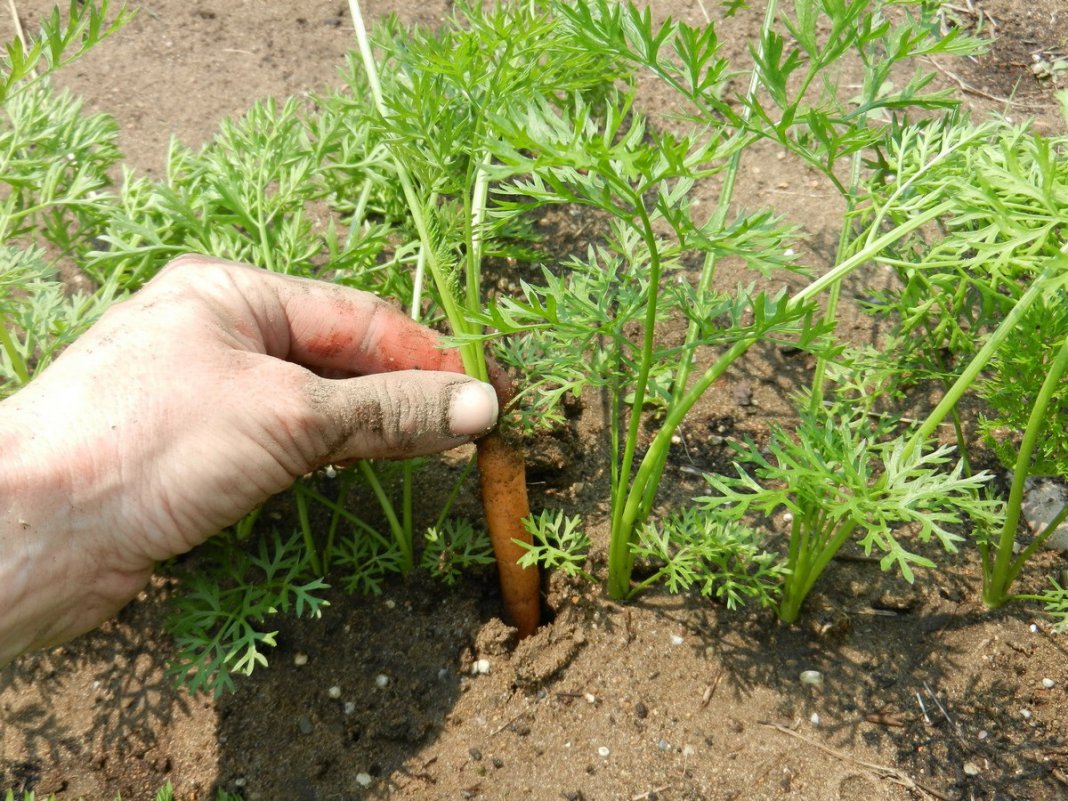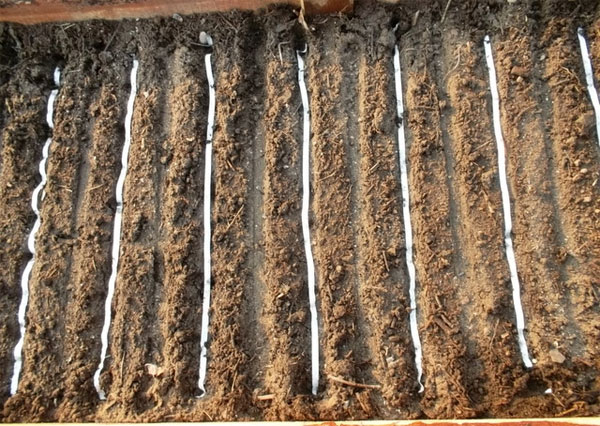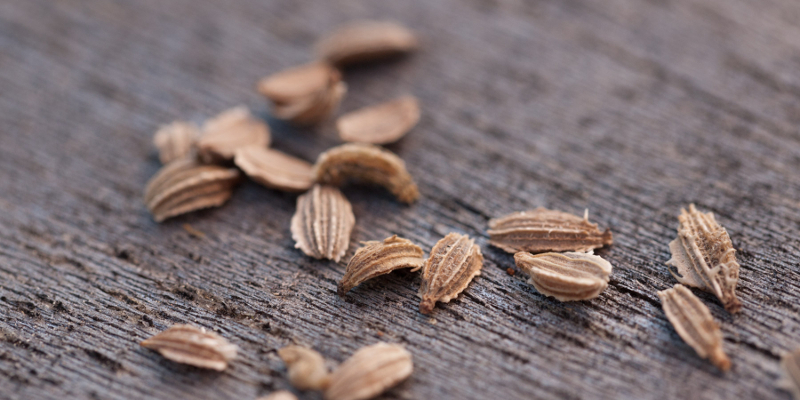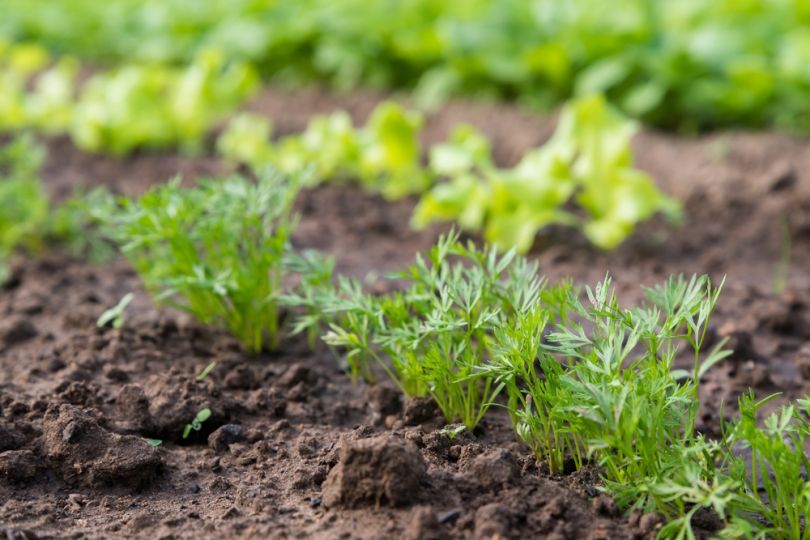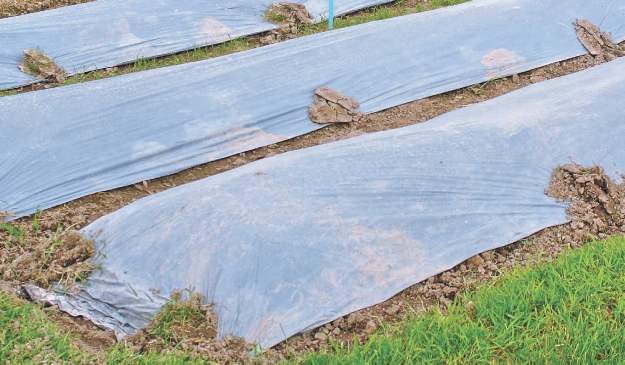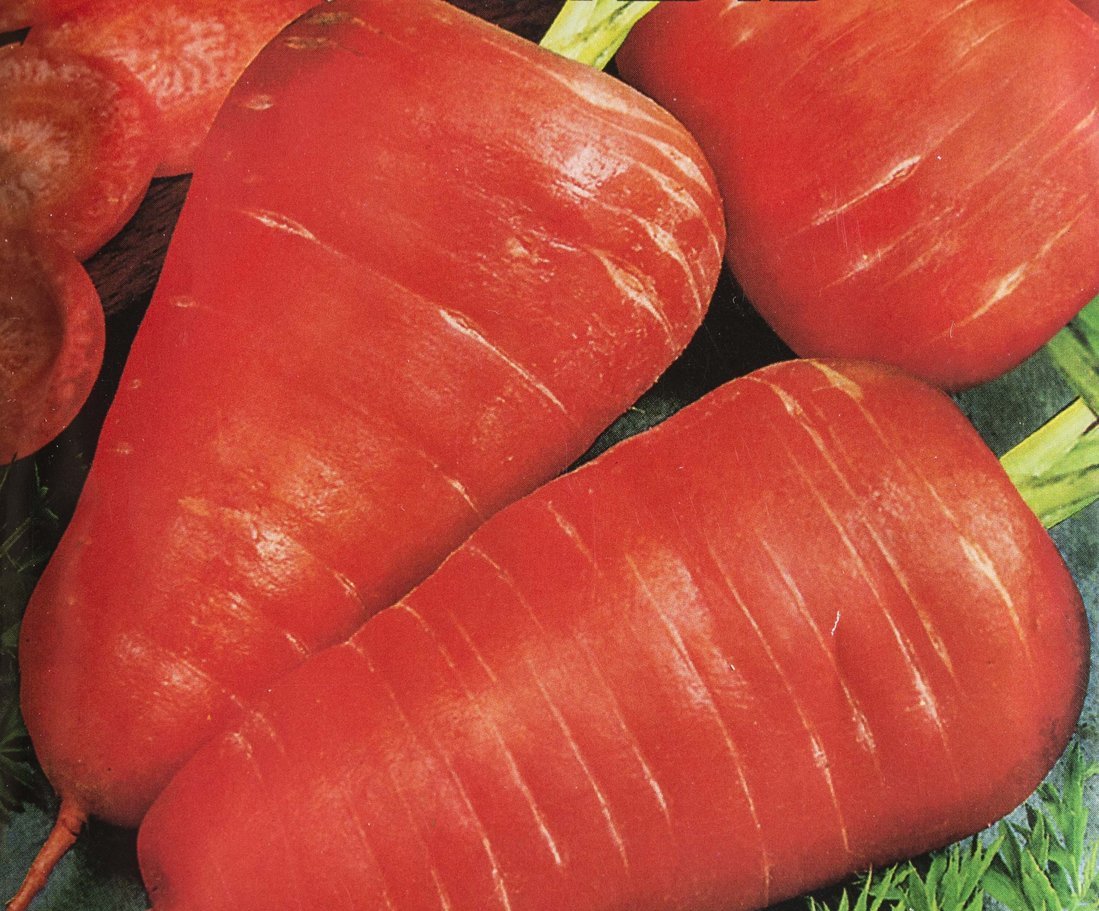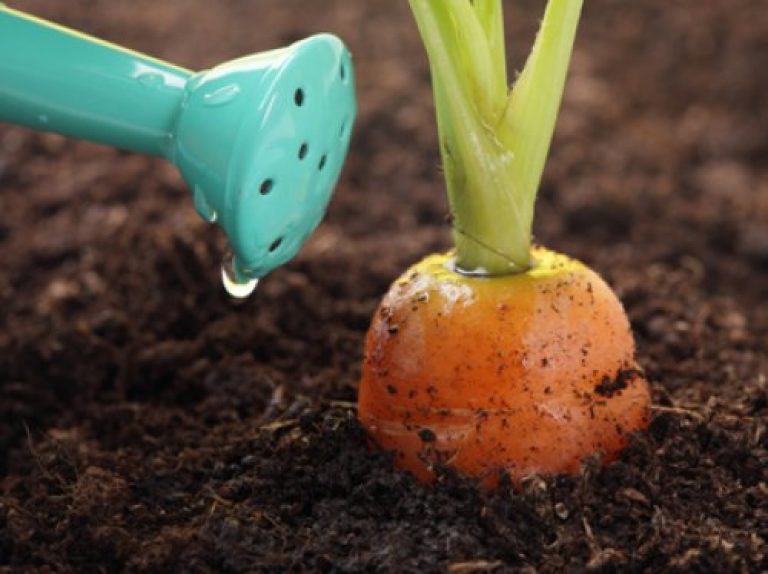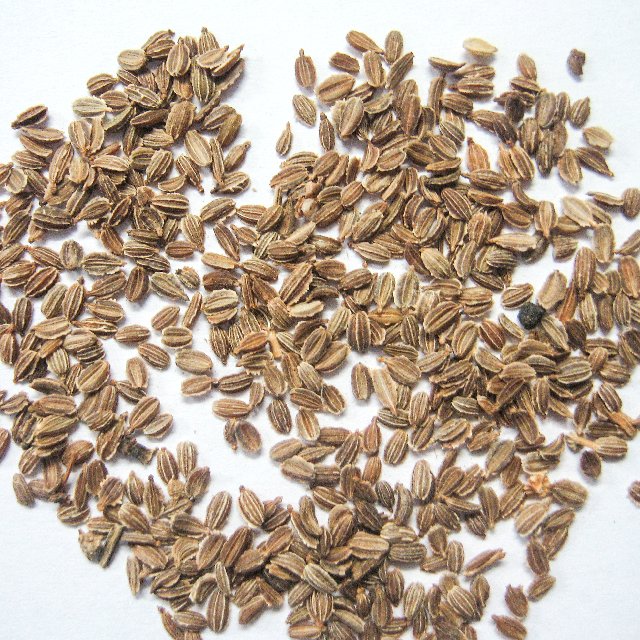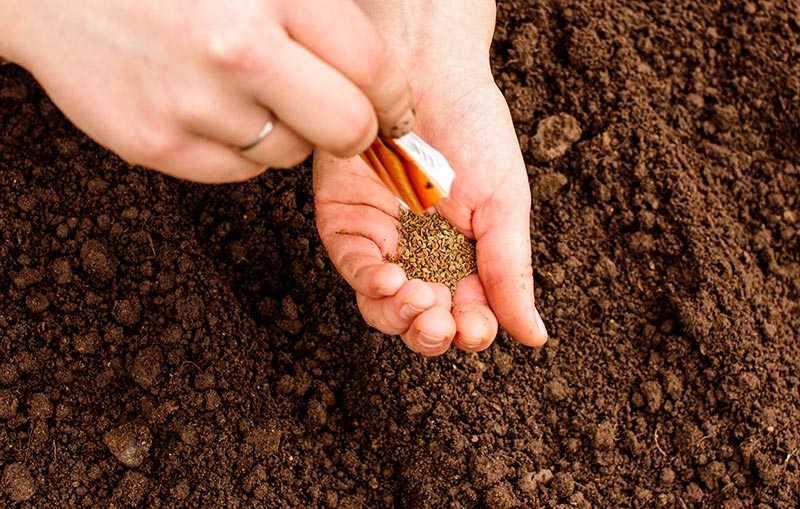Content:
The genus of carrots has existed for several thousand years. Afghanistan is considered the historical homeland, from where the root crop became widespread throughout the world, thanks to the relatively simple agricultural technology of cultivation.
Carrots are a healthy vegetable that is used in medical and dietary nutrition. It has a beneficial effect on the digestive tract, improves digestion, plant fibers are a natural brush for the intestines, and the content of vitamins and trace elements helps to cure various diseases.
This is a biennial plant, while carrots bear fruit once in a lifetime, and how much harvest will be obtained depends on the care. In the second year, a bush grows from which seeds can be collected. This is a natural way for carrots to multiply.
Sowing and care in the open field
Growing carrots is a simple process, but it has its own nuances.
How to grow carrots outdoors secrets:
- At the beginning of the season, you need to decide on the variety. As in many cultures, varieties are divided into:
- Early. Ideal for fresh consumption, the fruits are juicy and sweet. The ripening period is 3 months. The beginning of planting is the end of April, if a stable above-zero temperature is established at night. Early carrots are not suitable for transportation and storage;
- Average. This carrot is well suited for long-term storage. Ripening period - 4 months. Planting work begins in the second decade of May;
- Late. The advantages of these varieties are high safety during transportation and good presentation. Most often, these carrots are grown for sale. The ripening period is more than 4 months. The optimal sowing time is the last decade of May.
When choosing a variety, it is worth considering the weather conditions and the region of planting. If the weather conditions are not optimal, then the planting period can be postponed by 1-2 weeks, since the carrots are afraid of spring frosts and are unlikely to grow at standard sowing dates. In the Moscow region and the central region, you can grow any varieties according to the ripening period, but for Siberia and the northern regions it is better to give preference to medium and late varieties (the most popular and productive varieties are Dayana and the Queen of Autumn).
- The next important step is the preparation of the seed. Among the seeds are often not suitable for sowing. They are determined in advance by placing the seeds in a saline solution for 3 minutes. The floating seeds must be removed, the rest must be rinsed with plain water and placed in a tissue soaked in a growth activator for a day. The seeds must be well dried before sowing.
- The yield directly depends on the choice of the site. First of all, the planting site must be changed annually, otherwise the plant gets sick. Favorable precursors for carrots are potatoes, grains and legumes, garlic and onions, tomatoes and cucumbers. But sowing carrots after umbrella greens is not worth it. You need to take care of the neighborhood - onions or garlic in neighboring beds will help protect crops from carrot flies. The area where carrots grow must be well lit. Carrots love sun or minimal shade during the day. This culture tolerates scorching rays better than darkening.
After choosing a site, it is important to follow the soil preparation technology:
- You can only grow a good harvest on loose soils. Therefore, depending on the quality of the soil, methods of its preparation are chosen. It is better to prepare heavy soil in the fall. To do this, the bed is loosened and 2-3 kg of sawdust is mulched. At the same time, you can add rotted manure (consumption 6 kg / m2);
- Fertilization is an important step on which the quality of the future crop depends. Wood ash (consumption - 0.5 kg / m2) increases the richness of the taste of carrots and evens out the acidity of the soil. Top dressing with potassium and phosphorus will noticeably increase the size of the fruit. Nitrogen fertilizers are not good for carrots because they cause foliage to grow, depriving the fruit of its juiciness;
- After preparing the soil, you can start marking the beds. Longitudinal grooves are made at a distance of 20 cm from each other, 2-3 cm deep.
- Sowing seeds is carried out on a warm, windless day, before lunch. There are several popular planting methods:
- The most common is when they take a pinch of seeds and fall asleep in the grooves. The disadvantage of this method is obvious - the uneven distribution of seeds. Most often, seeds are sown in this way without preliminary preparation, so they germinate for a long time;
- Mixing seeds with finely grained tea or sand. For half a liter of sand or tea, you need to take 2 tbsp. l. seeds, mix thoroughly so that the seeds are evenly distributed in the mixture. Spread the mixture evenly over the furrows. This option is preferable, since the seeds are located at the correct distance from each other, and there is no need to do thinning;
- Tape method. Seed belts are readily available at gardening stores. But you can prepare the landing tape yourself at home. To do this, cut the thin paper into long strips 5 mm wide, coat them with paste and place the seeds with an interval of 3 cm. The ribbons should be laid in the grooves and sprinkled with earth. The ideal position of carrots when planting in this way is ensured;
- Pellet coating is a modern way. Each seed is placed in a hydrogel capsule enriched with trace elements. Such pills are painted in different colors, they are laid out one by one in furrows every 2-3 cm and covered with soil.
- Thinning. About 1/3 of the seeds do not germinate after sowing. The choice of seeding method can lead to uneven distribution of the planting material. Therefore, after the emergence of seedlings, it is most often required to remove seedlings in thickened areas. Sprouts, 3 cm high, are plucked one at a time, leveling the row, keeping the distance between the plants about 3 cm.When large tops are formed, you can remove the excess again, increasing the gap to 5 cm so that the roots do not interfere with each other.
- Proper care allows you to grow carrots as large and healthier as possible, and also avoids infection with diseases:
- Watering is necessary throughout the growth period, starting from the day of sowing. The soil should be moistened to a depth of 20-30 cm 2 times a week. The water allows the fruit to grow and become juiced. Watering can be stopped 14 days before harvesting, since the carrots have already reached their peak shape, and excess moisture can provoke rotting;
- Complex fertilization is a necessary stage in the formation of root crops. The first feeding falls on the day of sowing. After 2 months, the procedure is repeated with the same composition: ash, potassium and phosphorus components, nitrophoska dissolved in water;
- Loosening is an important part of grooming, as it affects the formation of the root crop.In dense, heavy earth, carrots become smaller and bent, as a result they do not look aesthetically pleasing. In combination with the removal of weeds and mulching, you can get an excellent marketable crop. During the season, it is enough to loosen the ground 3 times, carefully along the aisles, so as not to injure the carrots;
- Carrots rarely get sick and are affected by pests, therefore, chemical treatments are not necessary for preventive purposes. Most often, plants are annoyed by the carrot fly. But it appears when the agrotechnology of cultivation is not followed - on beds overgrown with weeds, rows not thinned out in time, or with excessive watering. Prevention against this pest is a step-by-step adherence to the rules of care.
- Harvesting begins at the end of September, but also at a later time. However, if the temperature drops to +8 ˚С and below, you can lose part of the crop, since it will not be suitable for storage. Dry, sunny weather is the best option for cleaning. Carrots are carefully pulled out of the ground, holding the tops at the base, laid out to dry in a sunny area for several hours, after shaking off the lumps of earth. Then the tops need to be torn off or cut off. A caisson, pantry or cellar is suitable for storage. The storage temperature is not higher than 7 ˚С, the air humidity should be high. The storage boxes are filled with a mixture of slightly damp sand and sawdust and the carrots are immersed in it.
How to grow carrot seedlings
The main advantage of the seedling method is the ability to harvest a month earlier than with the traditional method. Growing seedlings in a greenhouse allows you to achieve a super early harvest. For planting, you need to prepare small containers with cells from 2 to 5 cm (packages from eggs, cookies or sweets). Wet soil (universal can be used) is laid out in containers, a couple of seeds are placed in it in one place, without deepening. Then the seedlings are covered with polyethylene and placed in a dark place for germination. After 10-14 days, the film can be removed, by which time at least 1 leaf should have appeared from the ground. If weather conditions permit, the seedling containers can be taken out into the garden. When 3 real sheets appear, you can land. To do this, you need to choose a place for the garden. The article has already mentioned where it is better to plant carrots in the shade or in the sun. The shade negatively affects the size of the root crops, they become smaller. But the scorching sun has no effect on carrots. Next, you need to prepare the landing grooves, 15 cm deep, and lay a layer of humus. The seedling, together with the ground, must be carefully removed from the cell (you can first water it abundantly) and place it in a groove, the gap between the plants is 6 cm.In order for the carrot to grow straight and even, a third of the root must be pinched when planting. Subsequent care is similar to growing carrots from seeds, except for thinning, since the seedlings are planted immediately at the optimal distance.
The main secrets of planting carrots:
- Buying fresh seeds no older than 2 years ensures maximum germination;
- Sprinkling sawdust on the rows after sowing allows you not to lose sight of them;
- Loose soil is the key to a good harvest. The bed must be cleaned as much as possible of stones, foreign objects, large lumps of earth must be kneaded. In this case, the number of crooked fruits will decrease significantly;
- The bed can be made high, since carrots like bright light and do not like lowlands;
- After 4 years, you can re-plant the carrots in the previously used bed;
- Plants will grow much faster if the seeds are sown before the rainy season.
Tips for improving carrot health
It happens that carrots do not grow well. The reason for this may be shallow sowing of seeds without going deep into the ground, or dry soil. The superficial arrangement of seeds leads to their drying out. In order for the seeds to swell, they need to be sprinkled with a layer of earth 2-3 cm thick.
If the ground is prone to dryness, then covering the beds with a film or covering material will help to preserve moisture. If this is difficult to do, then you can work with the seeds. Before sowing, they need to be well soaked in water for 6 hours, during which time they will be filled with moisture, which will be enough for germination. Before sowing, the seeds must be dried.
It also happens that the seeds cannot break through the soil. This happens when there is a high clay content in the soil or after prolonged rains when the earth is compacted. In these cases, loosening and mulching the soil with sawdust helps. The soil becomes lighter.
Small carrots are a sure sign of the absence of thinning, or poor quality of this procedure.

Small carrots are a sure sign of the absence of thinning, or poor-quality performance of this procedure
Reasons why carrots are gnarled and horny:
- If the carrots are cracked, then, most likely, a mistake was made in maintaining soil moisture at the same level. It is always necessary to ensure that the 30 cm thick layer of earth is moistened;
- Horned carrots are lateral root growth after damage to the main root. You can damage the roots with aggressive loosening or with careless thinning;
- Crooked carrots grow in heavy soil, as it is difficult for them to grow into deep layers. This problem can be dealt with with mulching. Mulch lightens the soil and makes it softer.
Both an experienced agricultural technician and a novice gardener can grow carrots. How to get a good harvest of carrots outdoors? Much attention should be paid to soil preparation and care, then the roots will be strong and even. For the rest, carrots are an unpretentious inhabitant of the country. It easily tolerates frost and heat, is resistant to diseases, and is itself capable of repelling harmful insects. Carrots bear fruit 1 time, and how much benefit it does!
